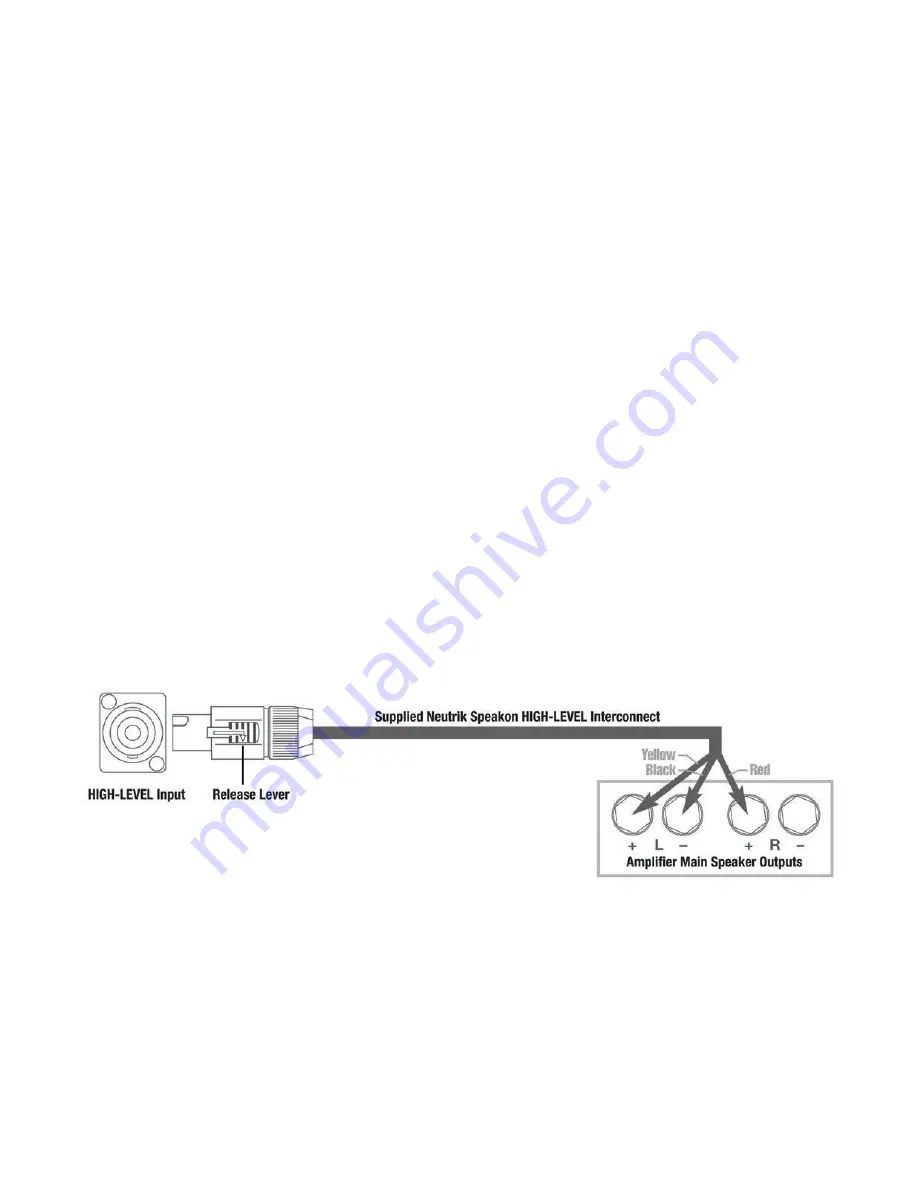
Making Connections
It is helpful to know that you will almost always connect the REL to the input on the rear panel labeled
“HIGH-LEVEL INPUT.” This connection is made to the REL Arrow™ Wireless Transmitter using the cable
supplied with your SerieT/i or similar REL sub bass system, the bare leads of which connect to the speaker
output terminals of the power amplifier. The easy and foolproof connection at the REL is done with a
Neutrik Speakon connector. The purpose of connecting to the speaker output terminals is one of the unique
secrets of REL’s success. By connecting to the high-level input on the REL from the amplifier, you build
forward the sonic signature of your main system, including the tonal balance and timing cues of the entire
electronics chain. In this way, the REL is fed the exact signal that is fed to the main speakers.
Connecting
HIGH-LEVEL connection, using the enclosed cable with the Neutrik Speakon connector, is always the first
choice. This connection can be made without affecting the performance of the amplifier because the REL’s
amplifier input impedance is 150,000 ohms, in effect not producing any additional demand whatsoever on
the rest of your system.
• The standard HIGH-LEVEL hook up procedure is: attach the red wire to the amplifier’s right positive speaker
output terminal; attach the yellow wire to the amplifier’s left positive speaker output terminal; attach
the black wire to whichever of the amplifier’s ground output terminals is convenient; plug the Speakon
connector into the Arrow™ Wireless Transmitter’s HIGH-LEVEL input.
5
Summary of Contents for Arrow 2 version
Page 1: ......
Page 2: ...Operating Instructions for the Arrow Transmitter...































